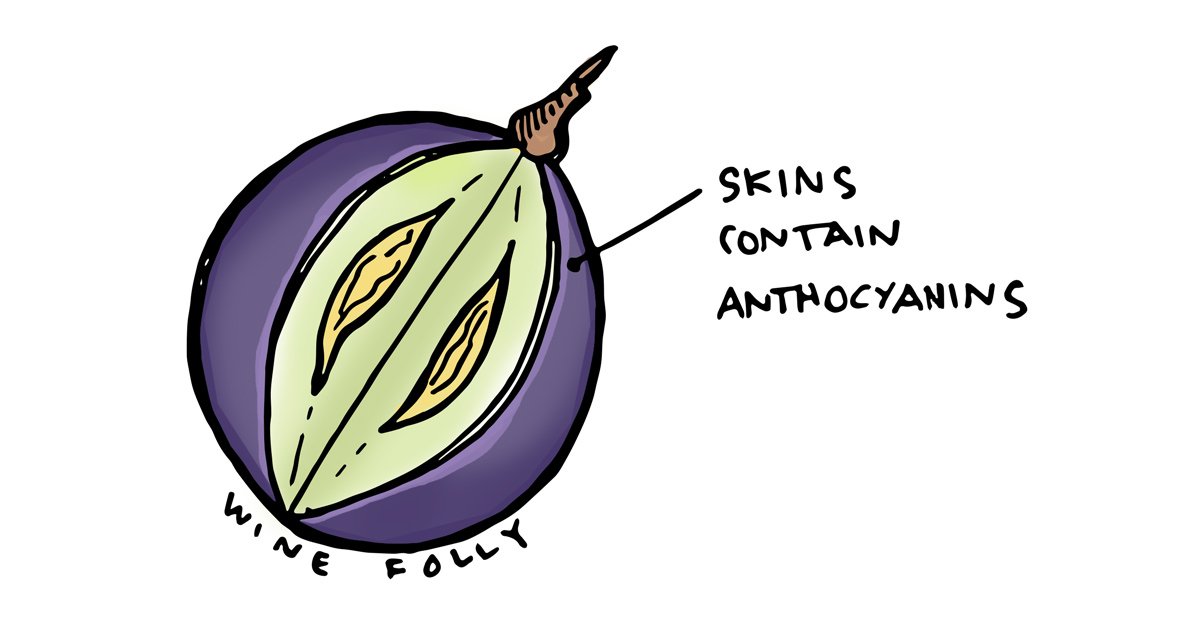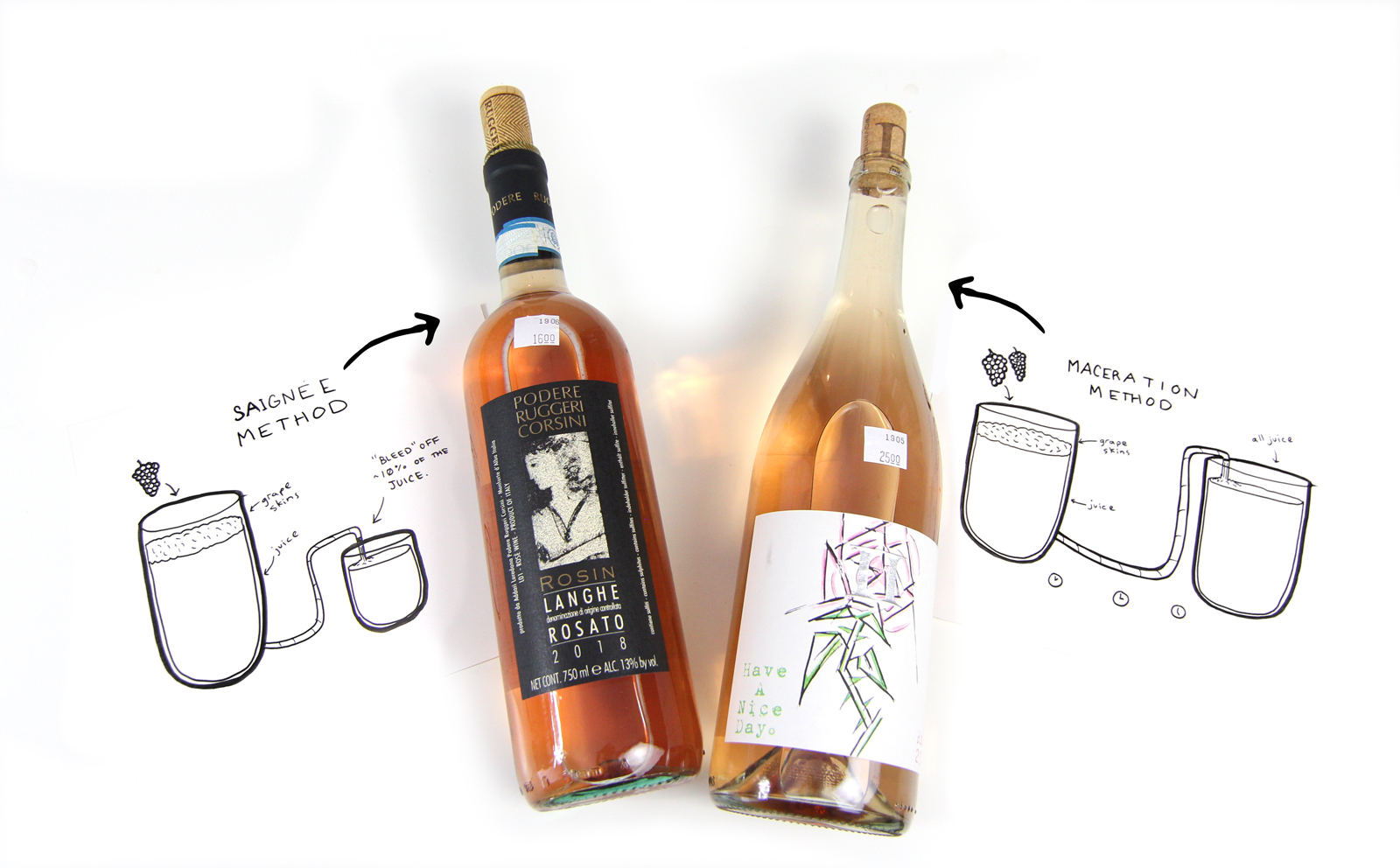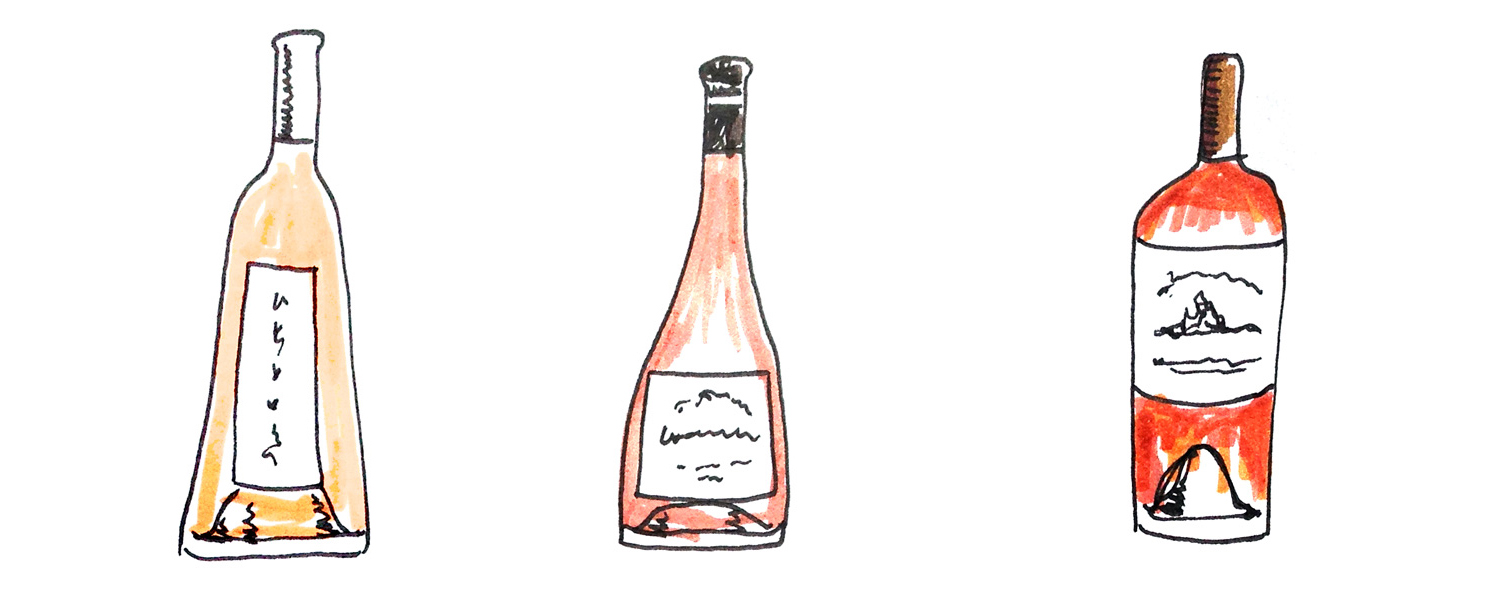Rosé wine: it’s easy to drink but actually pretty hard to make! This video explores 2 popular rosé wine methods and what makes this style unique.
Rosé is a bizarre wine category because it isn’t exactly red wine nor is it white wine. It lies somewhere in between.
The secret to the pinkish hue of rosé wine is found in the skins of purple grapes. It’s in the skins that you’ll find anthocyanin pigments that dye grape juice red.
Normally, to make a red wine, the skins spend the entire fermentation touching the juice. Some red wines go for even longer in “extended macerations.”
For rosé however, the process is abbreviated.
For example, Pinot Noir usually spends at least 4–6 hours on the skins to produce its trademark pale salmon hue. Cabernet Sauvignon on the other hand, needs only a few minutes to make a richer, deep-pink color.
The winemaking method also plays a major role in how rosé wine develops.
Rose typically employs one of two major methods: the Saignée Method and the Maceration Method.
What We Tasted
In this tasting, I explored the two major methods of rosé winemaking to see if there really was a big difference between the two.

Maceration Method Rosé
Two Vintners “Have a Nice Day” Rosé – 2018 ($25)
This was a blend of 57% Cinsault and 43% Grenache from Olsen Vineyard in Yakima Valley AVA in Washington State.
Coming in at 14.4% ABV, this was definitely the big guy of the bunch. It exuded sweetness on the nose with boisterous ripe peach, cantaloupe, honeydew melon, and sweet lemon zest aromas. On the palate, it was dry but big on flavors with an oily mid-palate that was balanced by juicy acidity and tingle of alcohol on the back.
Overall, it was a big, stylish rosé wine and did not disappoint.
Winemaker, Morgan Lee’s, Notes
My first go at rosé!
Both varieties were harvested on September 6th and crushed the morning of September 7th and soaked on the skins for 8 hours before pressing. No Saignée juice.
The wine was fermented in 1/3 each concrete egg, stainless steel barrels, and neutral French oak barrels previously used for red wine. Native yeasts were used and fermented to complete dryness. I let it go through partial malolactic fermentation. It was bottled in late January and released in February. It sold out shortly thereafter!
Saignée Method Rosé
Podere Ruggeri Corsini “Rosin” Langhe Rosato DOC – 2018 (~$16)
Most people think of Nebbiolo as the big, tannic red variety used in Barolo. In rosé (or “rosato” as the Italians say), Nebbiolo has seriously pretty potential.
This wine wafted delicate aromas of wild strawberry, fresh cut nectarine, and a subtle play of powdered anise. On the palate, it was lean and dry with bright acidity and notes of green melon and celery. Coming in at 13% ABV, it was not light by any stretch (especially for European rosé) and still outclasses many Provence selections.
Last Word: Don’t Judge a Rosé by the Color
The most surprising difference was the unexpected result that the color doesn’t really dictate the style when it comes to rosé wine.
The deeper-colored saignée method rosé turned out to be a lot lighter and leaner than the lighter-colored Washington State wine. So, next time your in the market for rosé, look at the varieties used and the alcohol level. These two factors are more useful for finding your favorite rosé.



